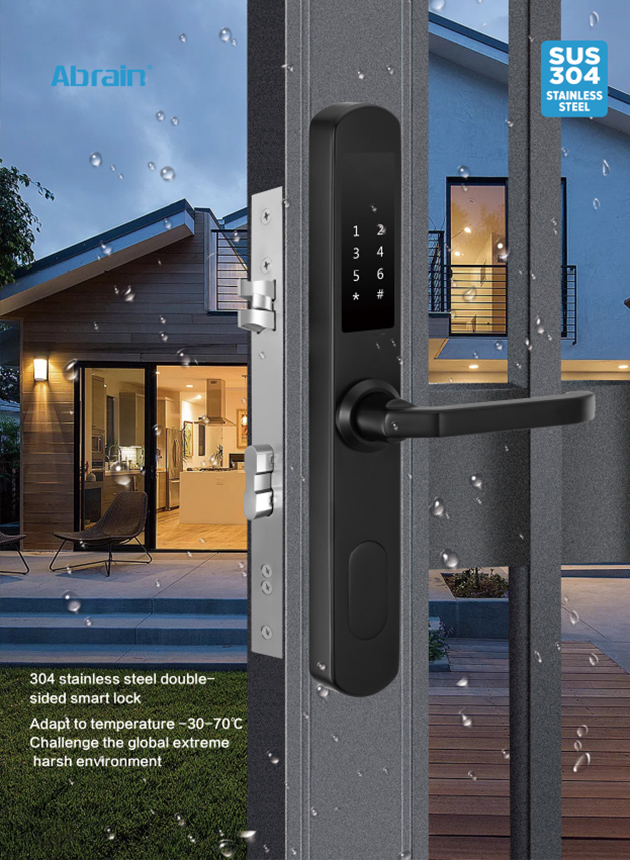Waterproof Fingerprint Lock Types and Usage Tips
Waterproof fingerprint locks are an essential component in various applications, including outdoor access control systems, industrial settings, and even smart homes. These locks provide secure and convenient access control, allowing authorized individuals to enter designated areas while keeping unauthorized individuals out.

Types of Waterproof Fingerprint Locks
.Optical Fingerprint Locks
Optical fingerprint locks use a light source to capture fingerprint images. They're known for their high accuracy and reliability, even in harsh environments. Optical fingerprint locks are often used in outdoor applications, such as access control systems for buildings, gates, and doors.
.Capacitive Fingerprint Locks
Capacitive fingerprint locks use electrical signals to capture fingerprint images. They're known for their compact design and low power consumption, making them suitable for battery-powered applications. Capacitive fingerprint locks are often used in smart locks, biometric authentication devices, and other portable applications.
.Ultrasonic Fingerprint Locks
Ultrasonic fingerprint locks use high-frequency sound waves to capture fingerprint images. They're known for their ability to read fingerprints even in dirty or wet conditions, making them suitable for industrial or outdoor applications. Ultrasonic fingerprint locks are often used in access control systems for manufacturing facilities, warehouses, and other industrial settings.
Key Features of Waterproof Fingerprint Locks
.IP Rating
The IP (Ingress Protection) rating indicates the level of protection against solid particles and water. Look for locks with a high IP rating, such as IP65 or higher, to ensure they can withstand harsh environments.
.Weather Resistance
Waterproof fingerprint locks should be designed to withstand temperatures, humidity, and exposure to the elements. Look for locks with weather-resistant materials and coatings to ensure performance.
.Secure Storage
Waterproof fingerprint locks should have secure storage for fingerprint data and other sensitive information. Look for locks with encrypted storage and secure communication protocols to prevent unauthorized access.
Usage Tips
.Proper Installation
Ensure the lock is properly installed and configured according to the manufacturer's instructions. This includes setting up the lock's settings, registering authorized users, and testing the lock's functionality.
.Regular Maintenance
Regularly clean and maintain the lock to ensure performance. This includes cleaning the fingerprint sensor, checking for software updates, and replacing batteries (if applicable).
.User Enrollment
Properly enroll authorized users in the lock's system, ensuring their fingerprints are accurately registered and stored. This includes following the manufacturer's guidelines for fingerprint enrollment and ensuring users understand how to use the lock correctly.
.Access Control
Configure the lock's access control settings according to your specific needs. This includes setting up access levels, scheduling, and other features to ensure the lock operates as intended.
.Troubleshooting
If issues arise, troubleshoot the lock according to the manufacturer's guidelines. This includes checking for software updates, ensuring proper installation, and resolving any technical issues that may arise.
Practices for Waterproof Fingerprint Lock Usage
.Follow Manufacturer's Instructions
Follow the manufacturer's instructions for installation, configuration, and maintenance to ensure erformance and longevity.
.Use High-Quality Fingerprint Images
Use high-quality fingerprint images to ensure accurate registration and authentication. This includes ensuring fingers are clean and dry, and avoiding excessive wear or damage to the fingerprint sensor.
.Regularly Update Software
Regularly update the lock's software to ensure you have the latest security patches and features. This includes following the manufacturer's guidelines for software updates and ensuring the lock is properly configured.
.Monitor Lock Performance
Monitor the lock's performance and address any issues promptly. This includes checking for errors, ensuring proper functionality, and resolving any technical issues that may arise.


